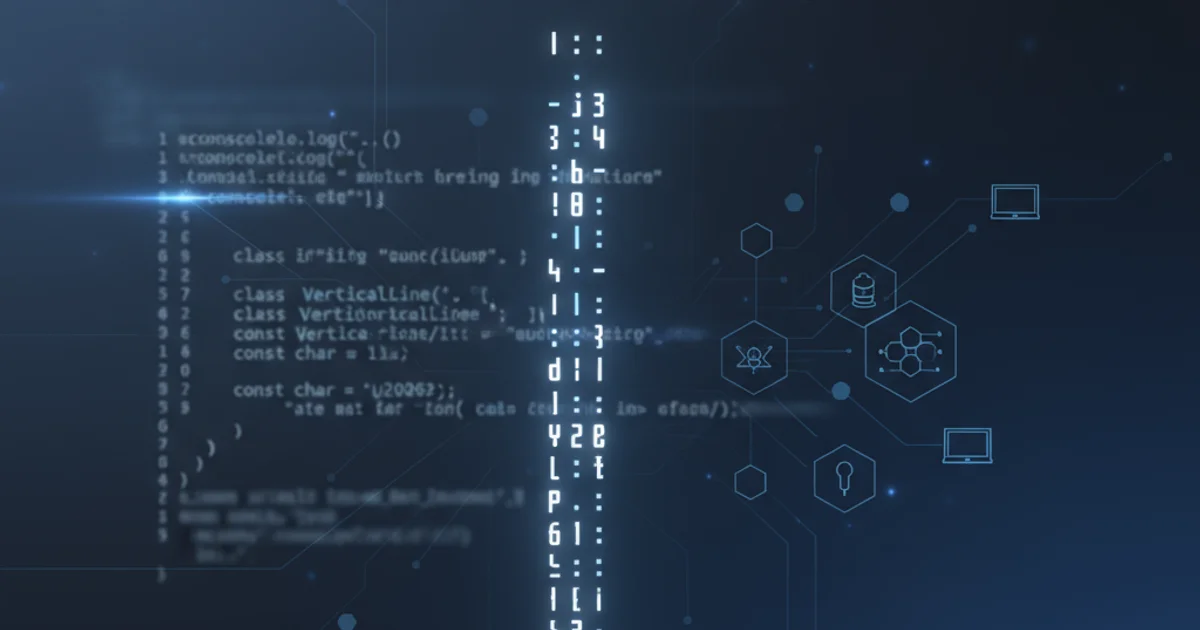vertical dotted line ascii or unicode character
Categories:
Mastering Vertical Dotted Lines in Terminals: ASCII and Unicode Solutions

Explore various methods for rendering vertical dotted lines in terminal environments using both ASCII and Unicode characters, ensuring compatibility and visual clarity across different systems.
Creating visually distinct separators or guides in terminal applications can significantly improve readability and user experience. Vertical dotted lines are particularly useful for delineating sections, indicating progress, or structuring output. This article delves into the various ASCII and Unicode characters available for this purpose, discussing their advantages, limitations, and how to implement them effectively in your terminal-based projects.
The Challenge of Terminal Character Rendering
Terminal environments, while powerful, have historically presented challenges for rich text formatting. The availability of characters, especially those beyond the basic ASCII set, depends heavily on the terminal emulator, the font used, and the operating system's locale settings. A character that renders perfectly on one system might appear as a placeholder square or a different character on another. Understanding these nuances is crucial for choosing the most robust solution for vertical dotted lines.
flowchart TD
A[Start] --> B{"Terminal Environment"}
B --> C{Font Support?}
C -->|Yes| D{Unicode Character Available?}
C -->|No| E[Fall back to ASCII]
D -->|Yes| F[Render Unicode Dotted Line]
D -->|No| E
E --> G[Render ASCII Dotted Line]
F --> H[End]
G --> HDecision flow for rendering vertical dotted lines in terminals
ASCII-Based Vertical Dotted Lines
ASCII (American Standard Code for Information Interchange) provides a very limited set of characters, but its universal compatibility makes it a safe choice for basic rendering. For vertical dotted lines, there isn't a single perfect ASCII character. Instead, we often rely on repeating characters or combinations that visually approximate a dotted line. The most common ASCII character used for this purpose is the pipe character (|) or the colon (:).
echo "Column 1 | Column 2 | Column 3"
echo "-------- | -------- | --------"
echo "Value A | Value B | Value C"
# Using colon for a more 'dotted' feel, though less vertical
echo "Column 1 : Column 2 : Column 3"
echo "-------- : -------- : --------"
echo "Value A : Value B : Value C"
Examples of ASCII-based vertical separators
Unicode Vertical Dotted Line Characters
Unicode offers a rich set of characters, including several that are specifically designed for drawing lines and borders. These characters provide a much more aesthetically pleasing and accurate representation of a vertical dotted line. The key is to ensure your terminal emulator and font support these characters. Some common Unicode characters include the 'Box Drawing' and 'Block Elements' ranges.
Here are some popular Unicode characters for vertical dotted lines:
U+2506 (BOX DRAWINGS LIGHT TRIPLE DASH VERTICAL)
echo -e "Column 1 \u2506 Column 2 \u2506 Column 3"
echo -e "-------- \u2506 -------- \u2506 --------"
echo -e "Value A \u2506 Value B \u2506 Value C"
U+250A (BOX DRAWINGS HEAVY TRIPLE DASH VERTICAL)
echo -e "Column 1 \u250A Column 2 \u250A Column 3"
echo -e "-------- \u250A -------- \u250A --------"
echo -e "Value A \u250A Value B \u250A Value C"
U+254E (BOX DRAWINGS LIGHT DOUBLE DASH VERTICAL)
echo -e "Column 1 \u254E Column 2 \u254E Column 3"
echo -e "-------- \u254E -------- \u254E --------"
echo -e "Value A \u254E Value B \u254E Value C"
U+258F (LEFT HALF BLOCK)
# This character can be repeated to create a 'dashed' effect
echo -e "Column 1 \u258F\u258F Column 2 \u258F\u258F Column 3"
Practical Implementation Considerations
Beyond simply printing the characters, consider how you'll integrate them into your scripts or applications. Many programming languages offer robust Unicode support. For shell scripting, echo -e is essential for interpreting escape sequences like \uXXXX. For more complex layouts, libraries that handle terminal UI (e.g., curses in Python, termbox in Go) often provide their own drawing primitives that abstract away character encoding details.
1. Check Terminal Encoding
Verify your terminal's encoding is set to UTF-8. You can often check this with locale or echo $LANG.
2. Select a Compatible Font
Choose a font in your terminal emulator's preferences that has good Unicode coverage. Fonts like 'DejaVu Sans Mono', 'Fira Code', or 'Noto Sans Mono' are excellent choices.
3. Implement Fallback Logic
For maximum compatibility, consider implementing logic that checks for Unicode support and falls back to ASCII characters if necessary. This can be done by attempting to print a known Unicode character and checking if it renders correctly.
4. Test Across Environments
Always test your output on different operating systems, terminal emulators (e.g., xterm, gnome-terminal, iTerm2, PuTTY), and SSH connections to ensure consistent rendering.